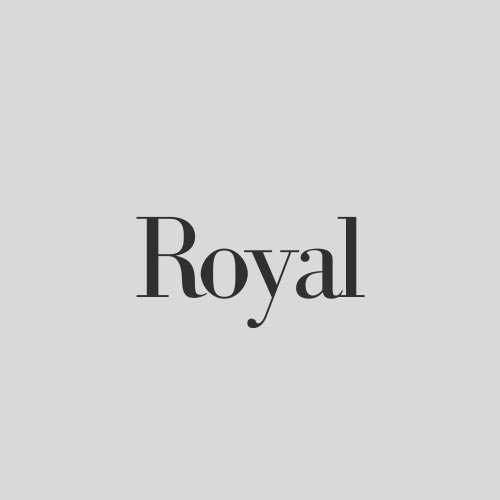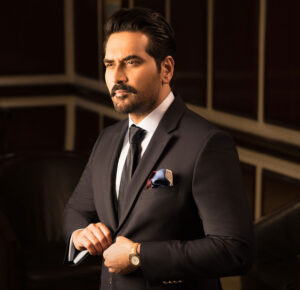
Business professional attire is important in the corporate world. It shows formality, competence, and professionalism, reflecting a person’s respect for their workplace and dedication to success.
Business professional attire is a formal dress code often needed in corporate settings to project a polished and competent image. It includes traditional and conservative clothing that meets professional expectations. For men, this usually means a well-fitted suit, dress shirt, tie, and polished dress shoes.
This dress code is more structured than business casual or semiformal styles, but less formal than black-tie or white-tie. It emphasizes a uniform and consistent look that aligns with corporate norms. By following business professional attire, men project a competent and serious image and help create a respectful and cohesive atmosphere in professional settings.
When To Wear Business Professional Attire?
Business professional attire is typically worn in formal corporate settings where a high level of professionalism is expected. This includes important client meetings, interviews, presentations, and business events that require formal dress.
It is also standard attire in certain corporate offices, especially in traditional industries like finance, law, and consulting, where a formal look is part of the company culture and expectations.
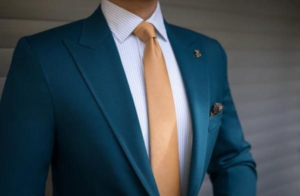
Business professional attire is also suitable for conferences, formal networking events, and official functions. In these settings, dressing professionally shows respect for the event and its participants and reflects a commitment to professionalism. For professional evening events, check if the cocktail attire dress code is appropriate.
Build Your Business Professional Wardrobe
In business professional attire, the suit is key to a polished and authoritative look. Choose a classic, well-tailored suit in conservative colors like navy, charcoal, or black. These shades project professionalism and suit various corporate settings.
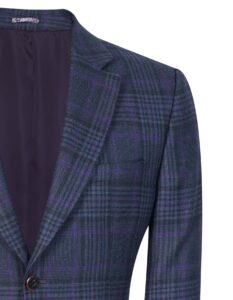
Blazers are allowed only if they match the color, fabric, and pattern of the dress trousers to form a complete suit, keeping the look formal and polished. For dress shirts, pick solid colors like white or light blue. Subtle patterns, like thin stripes, are also acceptable as long as they keep the look professional.
Sports coats and separates, like mismatched jackets and trousers, aren’t suitable for business professional attire. Their casual style doesn’t meet the formal standards of corporate environments.
Business Professional Attire Bottoms
Dress trousers are a key part of business professional attire, usually matching the suit jacket for a cohesive look. They should be well-tailored, with a smooth line from waist to hem, and are often made from high-quality materials like wool or wool blends for durability and a sharp appearance.
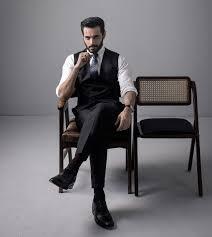
Choose dress socks in solid, conservative colors like black, navy, or dark grey to match the color of your suit pants. Make sure the socks are long enough to stay visible above the shoe when seated. A classic ribbed or smooth texture works best to keep a refined look without drawing too much attention.
Business Professional Attire Footwear
Oxford shoes are a staple in business professional attire, known for their timeless design and formal look. With a closed lacing system, clean lines, and a minimalist style, Oxfords offer the sophistication needed in a business setting.
Derby shoes are also suitable for business professional attire, providing a slightly more relaxed but polished look. Their open lacing adds comfort and flexibility, fitting various foot shapes while keeping an elegant style. For both Oxfords and Derbies, choose dark colors like black, navy, grey, or sometimes brown.
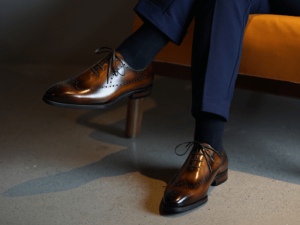
Penny and horsebit loafers also work well for business professional attire with their minimalist design, though Oxford and Derby shoes are preferred for their classic elegance.
Business Professional Attire Accessories
In business professional attire, ties are essential to complete a polished look. Classic silk ties in solid colors or subtle patterns like stripes or dots suit the formal style of a business suit, adding sophistication. Choose ties in conservative colors such as navy, burgundy, or gray for a professional appearance.
Pocket squares add a refined touch and allow a bit of personal style without distracting from the professional look. Choose pocket squares in coordinating or complementary colors to your tie and suit, ideally in silk or cotton, to enhance the sophistication of the outfit.
A well-chosen watch is both functional and a statement piece in business professional attire. Classic designs with leather straps or metal bracelets in simple colors and minimal features are ideal.
Belts in business professional attire should match the color and material of your shoes, with a simple and understated buckle to keep the outfit formal.
Fit And Tailoring
A well-fitted suit and dress shirt are essential for a sophisticated look. Tailoring adjusts the suit jacket and trousers to the wearer’s body, creating a streamlined silhouette that improves comfort and appearance. A proper fit prevents issues like sagging, bunching, or ill-fitting clothes, which can reduce the outfit’s professional appeal.
Fabrics And Materials
High-quality materials like wool or wool blends are preferred for suits, blazers, and trousers because they provide a refined look and durability. These fabrics are smooth and hold their shape well. In warmer climates or for summer wear, linen is a popular choice for suits due to its lightweight and breathable nature, although it wrinkles more easily.
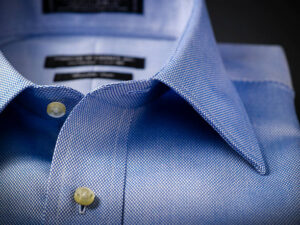
Cotton is often used for dress shirts, as it offers breathability and comfort while keeping a crisp, clean appearance. Additionally, silk is commonly chosen for ties and pocket squares, adding luxury and sophistication.
Colors And Patterns
Colors and patterns in business professional attire should follow a conservative and classic approach. Navy blue, black, and charcoal gray are the most common suit colors, providing versatility and a formal look for various business settings. These colors are timeless and convey professionalism and authority.
Dress shirts are usually in solid colors like white or light blue, serving as neutral bases that complement the suit. If patterns are used, they should be subtle and understated, like thin stripes or small checks. Ties can add some color or pattern but should remain conservative to keep the formal tone of business professional attire.
Grooming And Personal Care
Grooming and personal care are important parts of business professional attire, as they enhance formal clothing and overall professionalism. A well-groomed appearance includes neatly trimmed hair, a clean shave or well-kept facial hair, and clean, trimmed nails. It’s also usually expected that visible tattoos and piercings be discreet or covered.
Personal care includes maintaining good hygiene and ensuring clothing is clean, pressed, and in excellent condition. Shoes should be polished, and accessories should be handled carefully to avoid any signs of wear.
